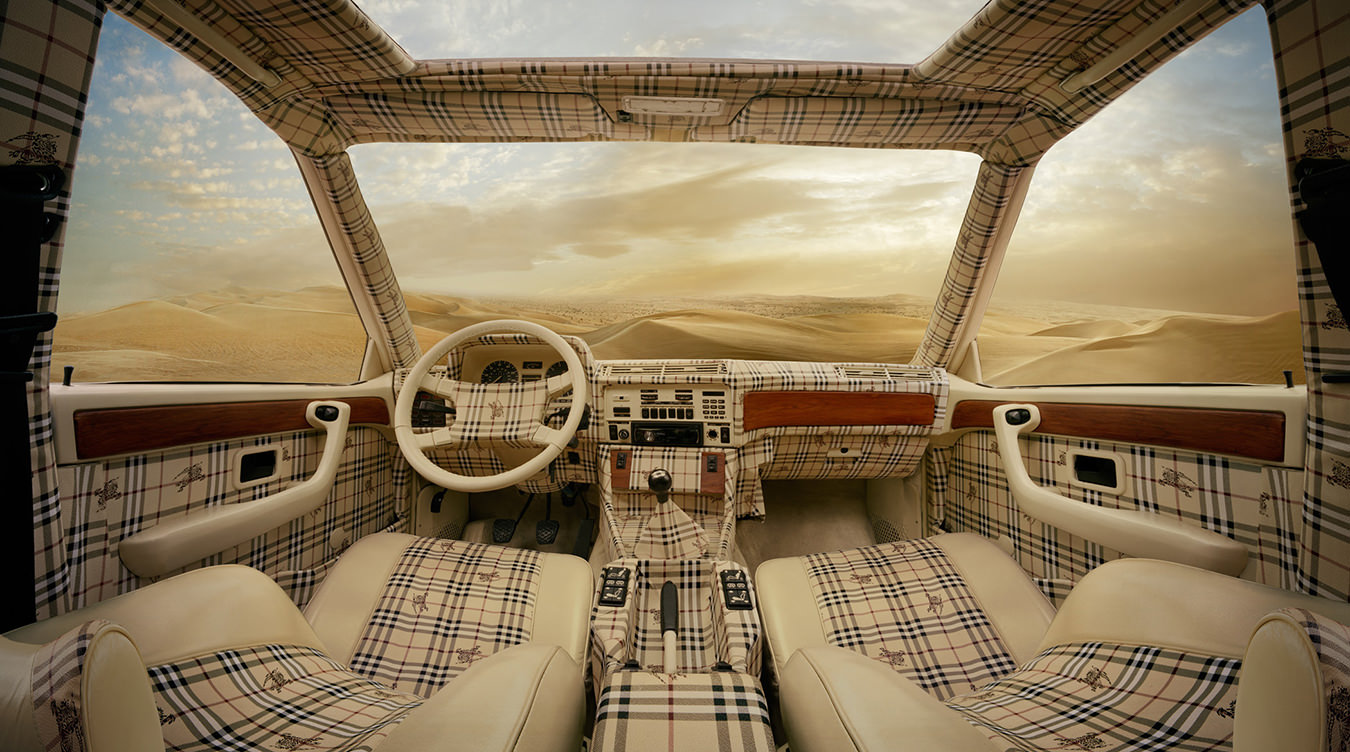Artist Luis Gispert
Logo mania.

Brooklyn artist Luis Gispert once faced a truck full of gun-toting meth dealers in Apple Valley, California. “I’m waiting for the sun to hit when a pickup truck pulls up,” recalls Gispert from his Brooklyn studio. Attracted by a picturesque sunset, Gispert had parked his car and walked over to what looked like a row of abandoned houses. “Inside [the truck] are three dudes who look tweaked out of their minds. One guy had a sawed-off shotgun, and the other, a pistol, and they’re young. The driver is like, ‘What are you doing here’ and I say, ‘Sorry man, I’m just taking pictures of the sunset.’ He was like, ‘You’re on private property—get off,’ but the sunset was amazing so I was like, ‘Is it cool if I just hang for another five minutes to catch the sun?’ And the guy’s like, ‘A’ight,’ and takes off.”
The 39-year-old was on one of many trips he took over two years to photograph the landscapes and designer-bootleg custom cars and clothing featured in his book, Decepción (which was also an exhibit at New York’s Mary Boone Gallery).
The result of Gispert’s journeys is a collection of stylized photo compilations of an obsessive underground subculture: custom counterfeit designer logo fabrics from Gucci to Versace. Some images depict custom clothing made from the bootleg fabrics. Others are panoramic shots of the interiors of tricked-out cars, like an Escalade decked out in a bootleg Louis Vuitton Takashi Murakami print, each juxtaposed with a landscape image. Against a frozen Lake Michigan, a pink car upholstered in fake pink Coach fabric makes you feel like you’re in the sedan—which is perched on the cotton-candy clouds of heaven.
“I shoot the landscapes and I shoot the cars, but I don’t know what’s going to match up,” explains Gispert, who has an MFA in sculpture from Yale University and is also a filmmaker. “I want it to have a certain plausibility and hyper-realism, and it’s also about trying to make a beautiful image. I tend to be very methodical—I think about things for a long time.”
Born in New Jersey to Cuban parents and raised in Miami, Gispert grew up immersed in hip-hop culture. “So there’s a genuine understanding and admiration of urban culture—this stuff has a history.”
“In car culture, you buy something that comes off the assembly line and then you personalize it or take artistic design licence—and it becomes you. So there is some kind of expression there, and I did recognize a level of obsession. I used to be obsessed about tricking out cars and the detail work—I still have that same obsession when I make something in the studio or make a photograph. Maybe I’m just projecting that on them.”
While subtexts of class, obsession, and fantasy may prevail, his next show at OHWOW gallery in Los Angeles will be different, likely based on a sculpture installation “inspired by a Gestalt psychology principle: people remember things better when incomplete.” But with a sense of humour. He’s excited about the Elizabethan collar he had made for a black plaster panther (which he liberated from the garbage) to photograph for the show.
The Decepción book will include new behind-the-scenes photographs from Gispert’s travels. “It was this existential trip alone, just me and my camera and the landscape, and that was good, very therapeutic,” he says. “And then there was the reality of going to find these things and dealing with people, sometimes getting blown off. That was the stressful part.”
As for the sunset shots taken that fateful day in the desert, they didn’t come out. When Gispert developed the film, the negatives were all double exposed.
Photo courtesy of Luis Gispert and Mary Boone Gallery.




